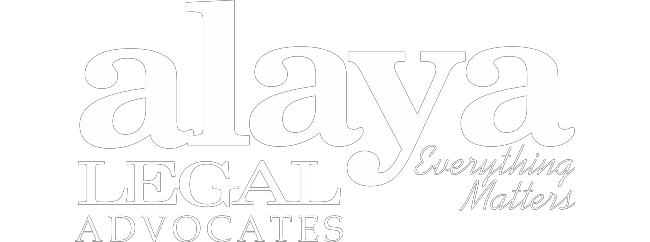| Date | Version | May 01, 2023| 2.0 |
| Keywords | ‘E-market place’ , ‘Central Government’, ‘Competition Law’, ‘Supreme Court of India’. |
| List of Legislation Referred. | 1. The Constitution of India 2. The General Financial Rules, 2017 3. The Competition Act, 2002 4. The Companies Act, 2013 |
| Jurisdiction | Republic of India |
The Indian Government has been actively promoting the use of its online procurement portal, the Government e-Marketplace (GeM), as a means to promote transparency, efficiency, and cost savings in public procurement. To further encourage the use of GeM, the government has made it mandatory in certain situations, for all Central Government Departments and Public Sector Undertakings to procure goods and services through GeM.
While the mandatory use of GeM has many potential benefits, it has also raised concerns among some stakeholders, particularly with respect to its potential impact on competition in public procurement markets.
The mandatory use of GeM has raised concerns among some stakeholders with respect to its impact on competition in public procurement markets. One of the main concerns is that the mandatory use of GeM could create a monopoly in the public procurement market, with the government as the sole buyer, and thereby limit competition.
This article gives a perspective on the relationship between the mandatory use of GeM and competition law in India.
Legal framework
Rule 149 of the General Financial Rules, 2017 (GFRs)
The GFRs are a compilation of rules and orders of the Government of India to be followed while dealing with matters involving public finances. These rules and orders are treated as executive instructions to be observed as specified in the GFRs.
GFRs are issued by the Government of India in furtherance of the powers granted under the Delegation of Financial Powers Rules 1978 (DFPR).
2.Rule 149 of the GFRs
DGS&D or any other agency authorized by the Government will host GeM for common use Goods and Services. DGS&D will ensure adequate publicity including periodic advertisement of the items to be procured through GeM for the prospective suppliers. The Procurement of Goods and Services by Ministries or Departments will be mandatory for Goods or Services available on GeM. The credentials of suppliers on GeM shall be certified by DGS&D. The procuring authorities will certify the reasonability of rates. The GeM portal shall be utilized by the Government buyers for direct on-line purchases as under:
3. GFRs are an exercise of executive powers of the Government of India.
4. The Central Government has deployed measures to apply Rule 149 of the GFRs to the central public sector undertakings (CPSUs).
Section 60 of the Competition Act, 2002
Act to have an overriding effect. —The provisions of this Act shall have effect notwithstanding anything inconsistent therewith contained in any other law for the time being in force.”
The Competition Act does not define ‘law’. Therefore, the general meaning of ‘law’ is imported and applied in this context. “Law” includes any Ordinance, order, bye-law, rule, regulation, notification, custom or usage having in the territory of India the force of law”.
Thus, Rule 149 of GFRs would qualify as ‘law’.
Examining anti-competitive implications
Section 4 of the Competition Act is examined to see if it can be given effect in the face of said Rule 149.
Section 4(1) of the Competition Act states that ‘no enterprise or group shall abuse its dominant position’.
Section 2(h) of the Competition Act defines an “enterprise”.
“Enterprise” means a person or a department of the Government, who or which is, or has been, engaged in any activity, relating to the production, storage, supply, distribution, acquisition or control of articles or goods, or the provision of services, of any kind, or in investment, or in the business of acquiring, holding, underwriting or dealing with shares, debentures or other securities of any other body corporate, either directly or through one or more of its units or divisions or subsidiaries, whether such unit or division or subsidiary is located at the same place where the enterprise is located or at a different place or at different places, but does not include any activity of the Government relatable to the sovereign functions of the Government including all activities carried on by the departments of the Central Government dealing with atomic energy, currency, defence and space. Explanation .—For the purposes of this clause,—[1]
(a) “activity” includes profession or occupation;
(b) “article” includes a new article and “service” includes a new service;
(c) “unit” or “division”, in relation to an enterprise, includes—
(i) a plant or factory established for the production, storage, supply, distribution, acquisition or control of any article or goods;
(ii) any branch or office established for the provision of any service.
The GeM Special Public Vehicle (GeM SPV) formed under Rule 149 of the GFRs would fall within the meaning of an ‘enterprise’ as defined under Section 2(h). The GeM SPV is constituted as a ‘charitable company’ under section 8 of the Companies Act, 2013.
Decided cases for ‘enterprise’
| S.No. | Case | Court/Bench | Relevant Paras/Page No. |
| 1. | CCI v Co-Ordination Committee of Artist and Technicians | Supreme Court of India | Para 40 |
| Findings of Court
40.The notion of enterprise is a relative one. The functional approach and the corresponding focus on the activity, rather than the form of the entity may result in an entity being considered an enterprise when it engages in some activities, but not when it engages in others. The relativity of the concept is most evident when considering activities carried out by non-profit-making organisations or public bodies. These entities may at times operate in their charitable or public capacity but may be considered as undertakings when they engage in commercial activities. The economic nature of an activity is often apparent when the entities offer goods and services in the marketplace and when the activity could, potentially, yield profits. Thus, any entity, regardless of its form, constitutes an ‘enterprise’ within the meaning of Section 3 of the Act when it engages in economic activity. An economic activity includes any activity, whether or not profit making, that involves economic trade. |
|||
| 2. | Rajat Verma v Haryana Public Works Department | Competition Commission of India | Para 8 |
| Findings of Court
If the term ‘enterprise’ as defined in Section 2(h) is read in conjunction with the definition of the term ‘person’ and ‘service’ it becomes clear that the legislature has designedly included Government departments in relation to any activity relating to storage, supply, distribution, acquisition or control of articles or goods, or the provision of services of any kind. The width of the definition of ‘enterprise’ becomes clear by the definition of the term ‘service’. The inclusive part of the definition of ‘service’ takes within its fold service relating to construction and repair. These two words are not confined to construction and repair of buildings only. The same would include all types of construction and repair activities including construction of roads, highways, subways, culverts and other projects etc. It is thus evident that if a department of the Government is engaged in any activity relating to construction or repair, then it will fall within the definition of the term ‘enterprise’. We may add that there is nothing in Section 2(h) and (u) from which it can be inferred that the definitions of ‘enterprise’ and ‘service’ are confined to any particular economic or commercial activity. The only exception to the definition of the term ‘enterprise’ relates to those activities which are relatable to sovereign functions of the Government and activities carried by the four departments of the Central Government, i.e., atomic energy, defence, currency and space.” |
|||
5. By virtue of Government directive to Government Departments and measures adopted in respect of CPSUs, GeM SPV is placed in a ‘dominant position’, because GeM SPV operates independent of other e-tendering /reverse auction platforms (‘Other Platforms’).
“Dominant position” means a position of strength, enjoyed by an enterprise, in the relevant market, in India, which enables it to operate independently of competitive forces prevailing in the relevant market or enables it to affect its competitors or consumers or the relevant market in its favour.
Section 4(2) (c) of the Competition Act states that there shall be an abuse of dominant position if an enterprise (read, GeM SPV) indulges in practice or practices resulting in denial of market access. By virtue of Rule 149, GeM SPV would end up abusing its dominant position, which is prohibited under Section 4(1) of the Competition Act.
Decided cases for ‘denial of market access’
| S.No. | Case | Court/Bench | Relevant Paras/Page No. |
| 1. | Reliance Big Entertainment Limited and Ors.
Vs. Karnataka Film Chamber of Commerce and Ors. (16.02.2012 – CCI) |
Competition Commission of India | Para 26,28 and 29
|
| Findings of Court
Held, the section under which the associations were indulged in abuse of the dominant position was Section 4(2)(c) of the Act. By boycotting the producers for different reasons they have indulged in denial of market access to the producers. Karnataka Film Chamber of Commerce did not allow to release films in more than 14 screens in the entire states. This was done only in the case of non- Kannadiga films. The restriction was imposed in order to promote the films made in the language of the State of Karnataka. Thus the association of KFCC had not only enforced unfair and discriminatory conditions in the provision of service but also had limited and restricted the provision of services in the market. Thus the provisions of Sections 4(2)(a)(i) and 4(2)(b)(i) were attracted. Though this was done to promote Kannadiga Films but this could not be done at the cost of denial of market access to other players in the market. The only way to promote Karnataka films was to produce quality films so that they were able to compete with the Hollywood and Bollywood films. There could not be a discrimination on the basis of language, cast, sex and creed. This was a constitutional guarantee and it was enshrined in the Competition Act. Therefore, the boycott of the films and limiting them only to 14 screens amounted to the denial of market access besides being discriminatory. KFCC had, therefore, contravened the provisions of Section 4(2)(a)(i) and Section 4(2)(b)(i) of the Act. Again, taking into account the small shelf life of films, a period of six months from the release date would be a reasonable period for the sale of satellite, video rights etc. A period of five years is totally unreasonable. A period of six months would take care of the interest of the producers and the exhibitors. But in any case, boycott of a film was an anti-competitive act under the provisions of Section 4(2)(c) of the Act. Similarly when some disputes arose between producers and the exhibitors and some amounts were due from the producers the association stepped in to support the exhibitor and as usual boycotted a subsequent film of the producer by not allowing its registration and release. In such cases also, the exhibitor could have filed a civil suit for recovery and the association should not have boycotted the film. This is also a violation of Section 4(2)(c) of the Act. Again, registration of films was necessary to bring some definitive in dealings and transparency. But if any other conditions were put which had no relationship with the contract or registration was violative of Section 4(2)(d) of the Act. Such supplementary obligations at the time of registration should be stopped by the association. |
|||
| 2. | Umar Javeed and Ors.
Vs. Google LLC and Ors. (20.10.2022 – CCI) MANU/CO/0089/2022 |
Competition Commission of India | Para 232 |
| Findings of Court
Google has perpetuated its dominant position in the online search market resulting in denial of market access for competing search apps in contravention of Section 4(2)(c) of the Act. Based on the foregoing analysis, the Commission is of the view that various covenants of MADA are in the nature of imposition of unfair conditions on OEMs who have no choice but to accept the same. As already stated, Google does not negotiate on key terms of the MADA which are found to be resulting in anticompetitive conduct viz. pre-installation of the entire suit of GMS as well as prominent placement thereof. By foreclosing the market for rivals, these covenants have also reduced the potential choice for users. Further, the pre-installation requirement for the entire bouquet of apps of Google is in the nature of supplementary obligation imposed on the OEMs, if they wish to pre-install even a single app of Google. The Commission is of the view that these practices of Google, especially when seen along with AFA/ACC and RSAs, harms competition as the restrictions prohibits alternative vendors from out competing Google’s apps on the merits. |
|||
| 3. | Hemant Sharma & Others vs All India Chess Federation | Competition Commission of India | |
| Findings of Court
Making organization of events commercially unviable for competing organizers: The above discussed restrictions imposed by AICF, on organizations such as CAI and the players, including the Informants, have a deterrent effect whereby chess players would not prefer to participate in chess tournaments being organised by other associations like CAI. AICF thus, indulges in practices which result in denial of market access. By imposing ban on players like the Informants and removing their ELO/FIDE rating, AICF makes organisation of chess events difficult for other competitors, by not allowing them to get the best resources and players for organising/participating in their events. |
|||
7. By virtue of Section 60 of the Competition Act, provisions of Section 4(1) of the Competition Act shall have effect despite Rule 149. To that extent Rule 149 shall have no force.
Overriding effect of the Competition Act, 2002 under Section 60
Act to have an overriding effect. —The provisions of this Act shall have effect notwithstanding anything inconsistent therewith contained in any other law for the time being in force.”
Therefore, Section 4 of the Competition Act shall have effect despite said Rule 149.
It can be stated that the mandatory requirement to use GeM for public procurement must satisfy the parameters under Competition Act, 2002. If GeM is found to be in a dominant position in the market for e-tendering/reverse auction platforms for public procurement, it cannot abuse its dominant position to prevent other e-tendering/reverse auction platforms from entering the market or to discriminate against them.




























